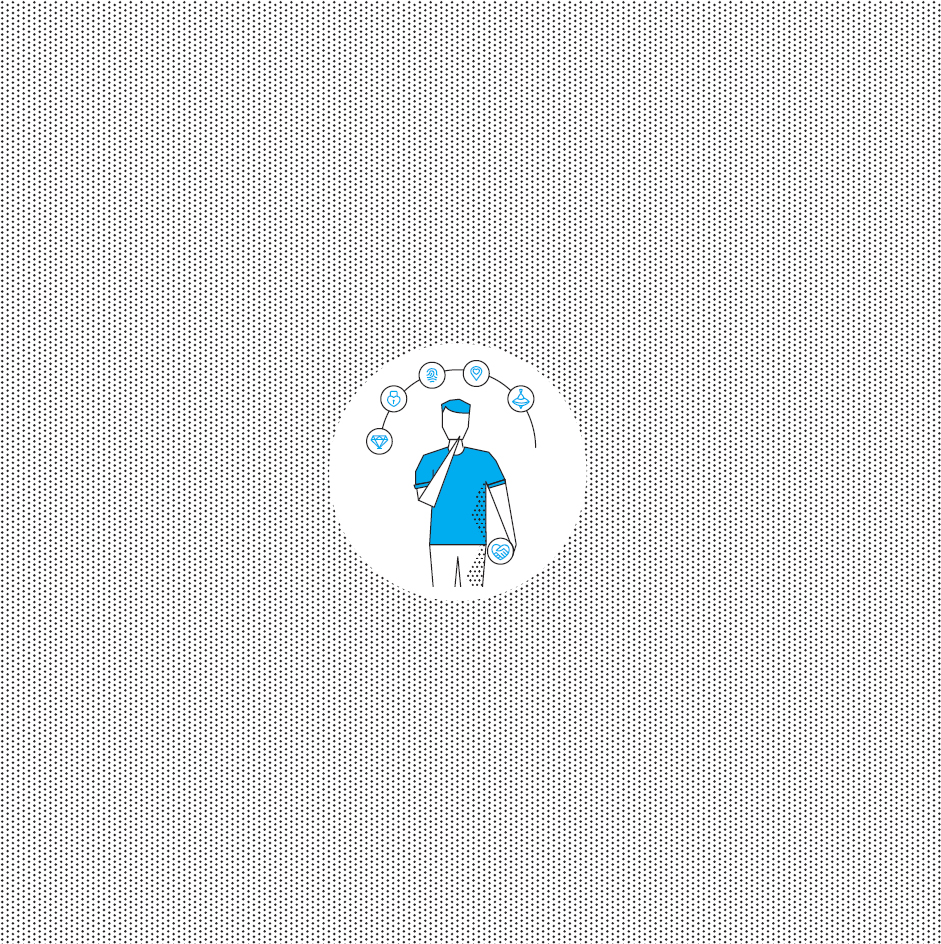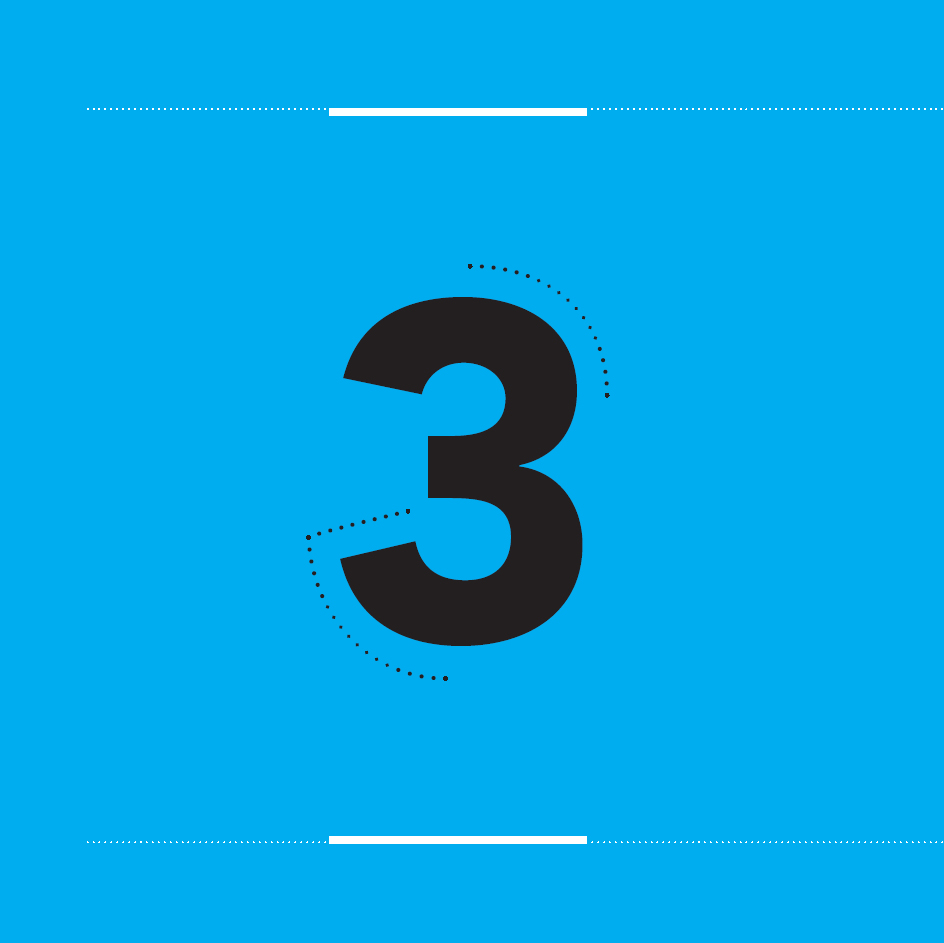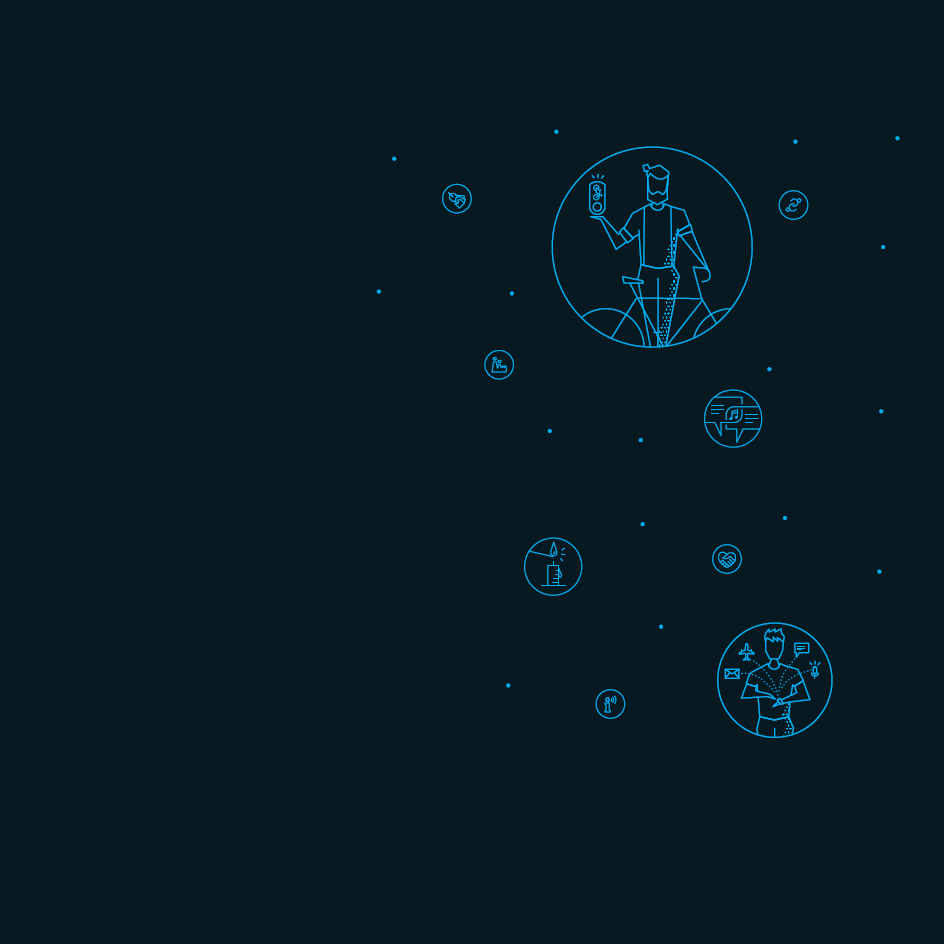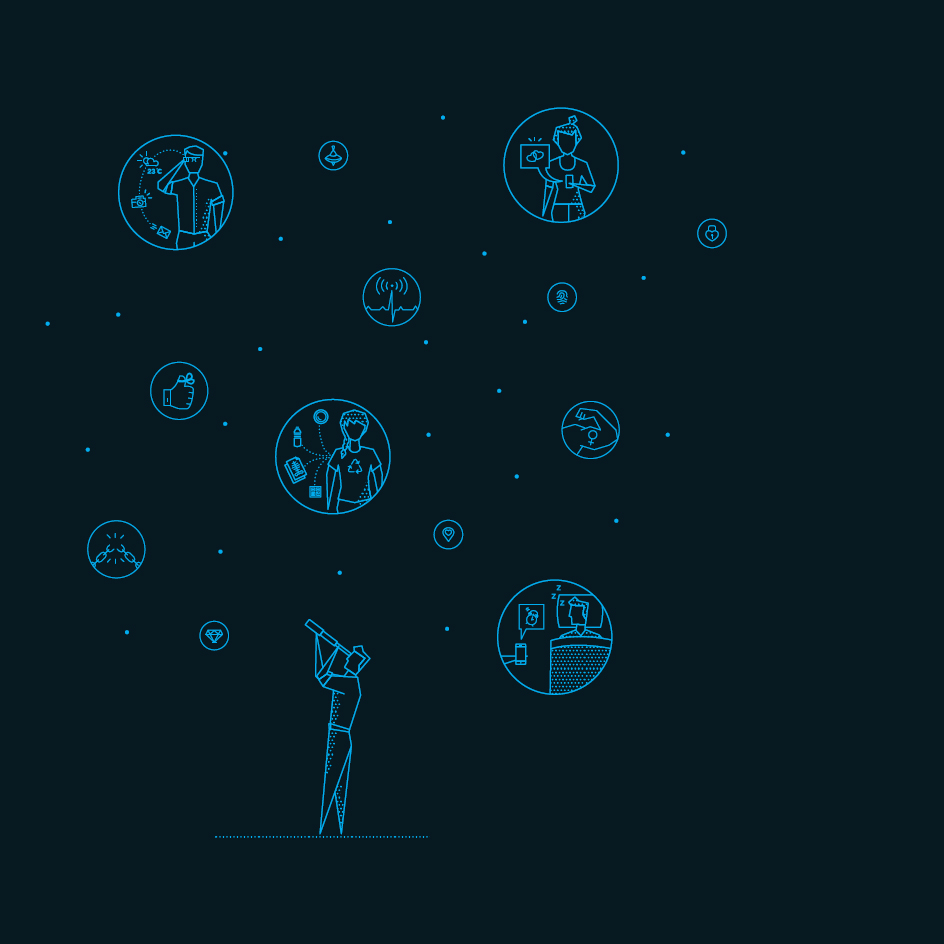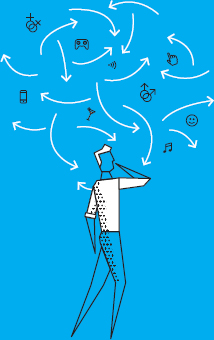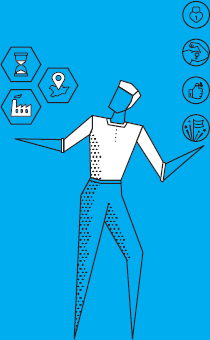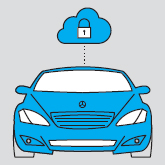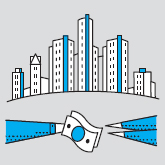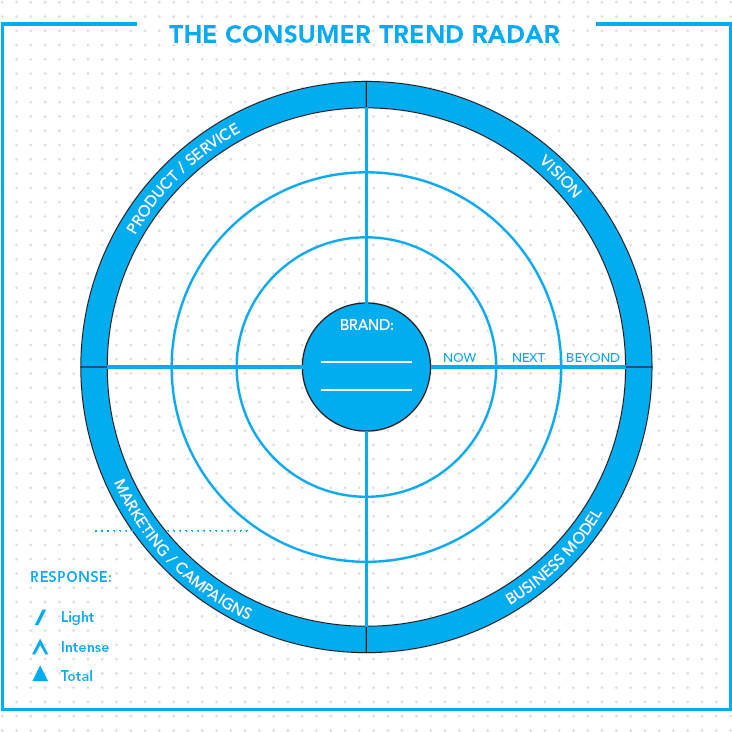Once you are spotting consumer trends, a whole new set of questions becomes urgent. Which trends offer your organization powerful new innovation opportunities? And once you've identified those trends, when and how should you set about applying them?
These are some of the most fundamental questions in the trend-driven innovation process.
In this section, we'll see why most organizations go about answering them the wrong way—and learn how you can arrive at the right answers.
[3.1] Post-Demographic Consumerism A license to focus on surprising things.
[3.2] Evaluating Trends for Opportunity Why almost any trend can offer you powerful opportunity.
[3.3] The Consumer Trend Radar Create a visual, shareable plan of your trend-led strategy.
Do you ever get the feeling that customer behaviors and mind-sets are becoming increasingly hard to predict? Becoming, in fact, chaotic?
Motorcycle brand Harley-Davidson—surely one of the world's most macho brands—sees 10,000 women a year attend its courses on how to ride and maintain a Harley. In Malaysia, 82 percent of 18-35s believe in preserving cultural connections through family values; only 57 percent of 37-60s believe the same. Meanwhile, 25 percent of U.S. mobile shoppers are over the age of 55.
RETHINKING FOCUS
This section is about singling out the trends that offer your organization the most powerful innovation opportunities.
Before we dive deeper into that, it will pay to address the underlying assumptions that guide your decisions on what to focus on, what to prioritize, and what to ignore. Because thanks to the profound shifts that we just glimpsed via those examples, in today's Expectation Economy many of those assumptions no longer hold true. That means that many organizations end up focusing on the wrong things, and—what's more—missing rich new opportunities, too.
THE DEMISE OF DEMOGRAPHICS
So, why is it that leading innovators, marketers, and CEOs alike get it wrong when it comes to organizational focus?
Often, established ways of setting priorities have centered around the dividing lines that brands use to help map the consumer arena: industry, target market, and especially, customer demographics. Today, these categories can still play a meaningful role in setting focus. But only when your analysis of them is underpinned by an appreciation of the new fluidity of customer expectation that is the hallmark of the Expectation Economy.
That fluidity means that the model of customer behavior embodied by the traditional demographic segments—age, gender, income bracket, marital status, and many more—is fast losing its predictive power.
In this chapter, we'll see how the demise of the old, demographic-based model of customer behavior—and the rise of more complex, varied and, yes, chaotic modes and patterns of consumption—means brands must drop the old assumptions that anchored their focus, and instead embrace new priorities and new directions.
That means the trends that truly offer you the most powerful innovation opportunities might currently be those you assume are safe to ignore.
So let's get to work, and dive deeper into this new Post-Demographic Consumerism.
overlap between the lists of 1,000 favorite music artists for 13-year-olds and 60-year-olds in the U.K.

increase in the number of female video gamers over 50 between 2012 and 2013.

of Chinese citizens in Tier II cities use social media, against 28% in Tier I cities.

of men in Asia disagree with the idea that “using grooming products is just a woman thing.”

of over 65s use social media, up from 1% in 2006.
THROW OUT THE OLD ASSUMPTIONS—ABOUT YOUR BRAND AND CUSTOMERS—THAT UNDERPINNED YOUR FOCUS. IT'S TIME TO REFOCUS AROUND MORE FLUID, MORE COMPLEX CUSTOMER BEHAVIOR.

increase in mixed-race marriages in the U.S. in the last 30 years.
A NEW DEMOGRAPHIC COMPLEXITY
For decades professionals have divided customers into demographic segments in order to better understand and predict their behavior. Think milliennials, the middle class, seniors, luxury customers, urbanites, and many more. And for decades, that shared language has served B2C industries (reasonably) well. You've almost certainly used it yourself when thinking about customers—and your entire organization's understanding of itself and its relationship to its customers may even be based around it.
But now, deep-running social, technological, and customer shifts mean that around the world people are no longer living the lives determined for them by their demographics. Liberated from traditional ideas about the lives they “should” live given their age, gender, income bracket, and more, these people are instead constructing lifestyles and identities of their own choosing.
You only have to glance at the consumer arena to see the evidence everywhere: customers simply aren't behaving as they “should” anymore. In the United States, a former WWE wrestler targets out-of-shape men with his DDP Yoga brand—and racks up $1 million in DVD sales in just six days after appearing on pitch-for-investment TV show Shark Tank. In Malaysia, the ancient and declining art of wayung kulit shadow puppetry is being reinvented using Star Wars characters, in shows proving popular with the young. In London, shoppers at high-end department store Selfridges use a straw to sip from miniature bottles of Moët & Chandon sold to them from a vending machine, turning champagne into an on-the-go convenience.
We could go on (and on!).
The picture is complex, but at least in broad terms, the takeaway is simple. Organizations that continue to focus and set priorities via a reliance on old demographic certainties about the type of customer they serve will fall behind the expectations of their customers—and lose out on the chance to win entirely new customers, too.
Instead, the organizations that prosper will be those that are able to shake off old assumptions and accommodate the new Post-Demographic complexity. That means being open-minded—and, yes, daring—enough to focus on entirely new things.
And in order to do that, it will pay to know more about the four forces driving the rise of Post-Demographic Consumerism: access, permission, ability, and desire.
AROUND THE WORLD, CUSTOMERS ARE FREEING THEMSELVES FROM THE SHACKLES OF DEMOGRAPHIC DETERMINISM AND CONSTRUCTING LIFESTYLES AND IDENTITIES OF THEIR OWN CHOOSING.
WHY NOW
[1/4] ACCESS
From Boston to Beijing, customers are amid a great convergence.
A SNAPSHOT . . .
In January 2015, Apple Senior VP of Marketing Phil Schiller tweeted that the company had sold its one billionth iOS device. Meanwhile, the international arm of Japanese clothes brand Uniqlo announced revenues of $2.8 billion in the six months leading up to February 2015; not a bad result for a brand whose popular cotton t-shirts sell for just under $13. With over 1,300 stores worldwide—including an 89,000-square-foot presence on Fifth Avenue—the brand said in a 2012 campaign, “Our clothes are made for all . . . going beyond age, gender, occupation, ethnicity, and all the other ways that define people.” And while Facebook long ago relinquished its status as cool social network, it has cemented its identity as social utility, with 1.3 billion active monthly users as of December 2014.
. . . OF THE GLOBAL BRAIN
As never before, today's consumers move in a global space of shared information, ideas, culture, and brand familiarity.
The globalization of mass consumerism—and the borderless spread of online connectivity—means customers worldwide are building relationships with the same megabrands, from Apple, Uniqlo, and Facebook to Nike, IKEA, McDonald's, and many more. The result? A global universalization of taste, sensibility, and customer choice that respects no demographic boundaries and sees customers of all ages from Beijing to Boston having access to—and lusting after—the same smartphones, sneakers, and sushi.
[2/4] PERMISSION
The social norms that kept behavior predictable are fading away.
ONE STORY . . .
In August 2014, Turkish Deputy Prime Minister Bülent Arinc made a speech lamenting declining standards of behavior. Women, he advised, “should not laugh out loud in public.” Across the coming days, thousands of Turkish women took to Twitter to post pictures of themselves defying Arinc and laughing out loud. Over 300,000 associated tweets were counted, many using the hashtag #direnkahkaha (resist laughter). Soon enough, a local campaign became a global one—and even British actress Emma Watson had posted a “laughing” Tweet. Of course, Turkey remains a relatively socially conservative society. But 2014's #direnkahkaha story points to a broader, and important, shift.
. . . MILLIONS OF NEW LIFESTYLES
Across many societies around the world, the old social norms that kept people tied to the lifestyles they “ought” to lead are in decline. Of course, that's not happening everywhere and not uniformly. But the broad direction of travel is clear: toward greater social liberalization. In 2001, the Netherlands became the first country to legalize gay marriage. By 2015, it was legal in 17 countries. The takeaway? These new social freedoms are allowing people to construct and display lifestyles of their choosing, rather than remain chained to the lifestyles dictated to them by their gender, age, and other demographic characteristics. And with that new freedom comes the freedom to consume as they choose, too.
[3/4] ABILITY
More choice means a more personal consumption.
CHOICE EXPLOSION . . .
If you're in any doubt over the near-stupefying level of choice available to customers in today's Expectation Economy, consider these three glimpses of the broader reality.
Customers who visit Nike's website to buy a pair of shoes can choose from a product range of over 1,000. The U.S. Environmental Protection Agency estimates there are more than 700 brands of bottled water sold in the United States alone. And it's estimated that there are 253 million different products for sale on Amazon.com, and those products are available to pretty much everyone: Amazon says its fulfillment centers deliver to over 180 countries.
. . . ALLOWS PERSONAL EXPRESSION
We're living through global explosion in product and service choice. Digital consumerism has not only made it easier than ever for customers to learn about, locate, and buy any product, it has also allowed them to experiment with new products at low (or zero) risk and cost, quickly discard anything that disappoints, and move on to the next experience. Thus empowered, these consumers are now more free than ever to consume more of what they want.
That means that today, not only do rising numbers have social permission to be the people they want, they are now more able than ever to express that individuality via their consumption: whether that's through the clothes they wear, the food they eat, the music they listen to, and more.
[4/4] DESIRE
Customers are seeking status in new and less predictable ways.
CUSTOMER STATUS . . .
Between June and September 2014, over 17 million videos were shared on Facebook in which the subjects were drenched by a bucket of icy water. The #icebucketchallenge social media phenomenon started among ordinary users of the social network, but soon spread to celebrities and even politicians (Barack Obama quietly declined when nominated by Justin Bieber).
The challenge was in support of U.S. charity The ALS Foundation, for which it raised over $115 million. But behind the laudable intention to raise money for charity, even the most casual social commentator could discern another motive: the status that came with the implicit statement, “Look, I am a good person!”
. . . HAS DEMOCRATIZED
Pursuit of status is a primary motivator of almost all behavior. Traditionally, status meant wealth display: the flashy car or expensive watch. But new status symbols—experiences, authenticity, wellness, ethics—are more democratic, and, just like the #icebucketchallenge, more about “who I am” than “what I have.” The result is to render customer behavior much less predictable by demographic means, as rich and poor, old and young all jockey for status. Indeed, in the Post-Demographic customer arena, where status does not have to cost money, the traditional status hierarchy is often reversed, as older, richer customers play catch-up to younger, less affluent, cooler counterparts.
POST-DEMOGRAPHIC BRAND STRATEGY
We saw in the previous section how the creation and spread of new customer expectations is the fuel that drives the Expectation Economy. Game-changing innovations create new expectations that customers then bring to bear on every experience, driving an endless cycle of ever-higher expectations.
EXPECTATION TRANSFER
Cast your mind back to that central insight about customer expectations—that they transfer between customers and across industry and other boundaries—and it becomes clear that the emergence of a Post-Demographic consumer arena is about expectation transfer, too. Post-Demographic Consumerism is really about saying that the world is now too complex, ideas too available, people too networked, and society too fluid for expectations to remain the preserve of any single demographic for long.
What does this mean for brands? Yes, young people—more experimental, less tied to existing commitments—will remain the most common early adopters. But now compelling innovations will be rapidly adopted by, and/or almost instantly reshape the expectations of, any and all demographics.
So, forget old thinking about the type of person who buys from your brand. But don't worry, that doesn't mean abandoning any attempt to focus. Rather, it means choosing to focus on trends that open your organization to customers you once assumed were “not for us.”
These four key innovation opportunities can inform your navigation of the Post-Demographic world and your decisions about how and where to focus.
[1] NEW NORMAL
Across societies worldwide (though not uniformly), old social conventions are falling away. Brands should embrace the new, nontraditional lifestyles that are rising in their place.
[2] HERITAGE HERESY
In a world in which consumers are no longer behaving as expected, neither should brands. Be prepared to reimagine, subvert, or simply throw away decades of brand heritage and tradition and do something entirely unexpected.
[3] CROSS-DEMOGRAPHIC FERTILIZATION
Today, innovations cross demographic boundaries nearly instantly. So seek inspiration in demographics you've never looked at before.
[4] HYPER-DEMOGRAPHIC TARGETING
It's still possible to have a target customer in a Post-Demographic world. But instead of the old demographic segments, target narrower, self-created tribes of taste and interest.
SHIFTING YOUR FOCUS
[1/4] NEW NORMAL
Celebrate and cater to nontraditional lifestyles.
As old social norms fade away, behaviors and lifestyles that once had to remain hidden are allowed to bloom in full view, and altogether new ways of living are constructed. So how could a decision to embrace this New Normal—and cater to the new wants and needs it is creating—change how and where you focus?
Before answering, it pays to remember that the rise of the New Normal can look very different, depending on where you are. In the United States, it can mean rising acceptance of gay marriage: a February 2015 Wall Street Journal poll found 59 percent in favor. Meanwhile, in more socially conservative Asian societies it might mean changing attitudes to gender and relationships: in June 2014, China's Ministry of Civil Affairs said the divorce rate had jumped 13 percent in the preceding year.
So, does catering to the New Normal mean changing the tone of your marketing? Acknowledging and celebrating customer lifestyles you have previously ignored? Or both?
Let an awareness of the New Normal percolate into your discussions around focus and priority, and see where it takes you. Remember, the lifestyles of your customers—and potential customers—are changing; so should you.
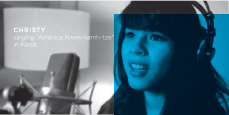
COCA-COLA
CONTROVERSIAL MULTICULTURAL “AMERICA THE BEAUTIFUL” CAMPAIGN
Coca-Cola's 2014 Super Bowl ad featured “America the Beautiful” sung in a variety of languages (including Spanish, Hindi, and Hebrew) and by people from various ethnicities. The ad's celebration of multiculturalism caused controversy, which in turn caused others to defend Coke. Following the ad, U.S. 19- to 24-year-olds bought Coke products 20 percent more than in the preceding month.
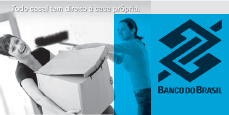
BANCO DO BRASIL
MORTGAGES FOR SAME-SEX COUPLES
March 2013 saw Brazilian bank Banco do Brasil begin offering mortgages to same-sex couples. The lending scheme protects both partners and their children in the event of divorce, separation, or death. The initiative was supported by an ad campaign that showed a lesbian couple on their moving day alongside the slogan: “Mortgages for same-sex couples: at Bank of Brazil you can.”
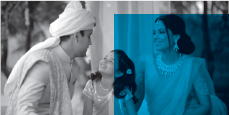
TANISHQ
INDIAN JEWELRY CELEBRATES NONTRADITIONAL FAMILIES
Indian jewelry brand Tanishq's recent campaigns have addressed shifting attitudes toward marriage. In 2013's “Tanishq Wedding Film,” a bride is remarried in the presence of her daughter from a previous marriage. The video has over 1.1 million views on YouTube. Meanwhile, in a 2014 video, a grandmother advocates love-based marriage, challenging orthodoxy around arranged marriages.
[2/4] HERITAGE HERESY
Play with, subvert, or even discard your brand heritage.
Your brand heritage is a set of traditions aimed at speaking to the type of people who buy from you. But in a Post-Demographic world, people are no longer behaving to type, and that has profound implications for the relevance and usefulness of your brand.
The reality for many brands today is that the needs and wants of customers—who are constructing new, diverse, and more personally meaningful lifestyles—simply don't align with the narrative that brands have labored to build. For rising numbers of those customers, brand heritage and story have become at best irrelevant, and at worst an active barrier, one that prevents brands they might engage with from offering a product or service that's right for them, today. No wonder a recent survey found that the majority of people worldwide wouldn't care if 73 percent of brands disappeared tomorrow.
In a Post-Demographic world in which people are no longer behaving as they “should,” neither will brands who want to keep up with existing customers and win over the entirely new ones waiting to engage. Instead, they'll commit brand heresies that see them make moves no one expected.
Want to commit a heresy of your own? Start by asking: “What should our brand never do?”
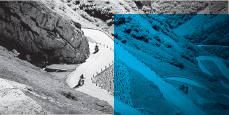
HARLEY-DAVIDSON
50 MILLION TREES BY 2020
For decades, motorcycle brand Harley-Davidson has traded on its rebel image. But October 2014 saw the brand make an altogether different move: it partnered with charity The Nature Conservancy on a pledge to plant 50 million trees worldwide by 2020. The brand committed $550,000 in annual grants and pledged to tap its global biking community for support.

MOËT HENNESSY
INDIAN SPARKLING WINES
The Moët brand is synonymous with champagne—and with France. But October 2013 saw LVMH-owned Moët Hennessy take a radical departure by launching two varieties of sparkling wine in Mumbai. The Chandon Brut and Chandon Rosé Brut wines are made at vineyards in the Nashik region of India. They are priced at around $20, against around $80 for Moët & Chandon's Brut Imperial.
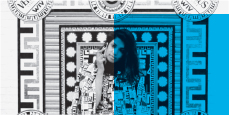
VERSACE
COUNTERFEITS INSPIRE COLLECTION
Italian fashion house Versace has always traded on a sense of Italian style and on the rarefied design sensibilities typical of any high-fashion house. But in October 2013 the brand subverted these key principles by partnering with British-Sri Lankan recording artist M.I.A. to launch the M.I.A. x Versace Versus Collection, a line that takes inspiration from the Versace counterfeits found in many markets.
[3/4] CROSS-DEMOGRAPHIC FERTILIZATION
Be inspired by—and cater to—entirely new demographics.
In the Post-Demographic arena, your customers, and people who are not yet your customers, aren't waiting for your permission to live the lives they want. Seniors are participating in the Collaborative Economy. Young people are cherishing and interpreting old customs in new ways. Affluent consumers are prioritizing value, and those with few resources are seeking a taste of luxury.
Today, the most compelling innovations move across demographic boundaries nearly instantly, as all demographic groups become free to seek out the new products, services, and experiences that speak most powerfully to them. One way to keep up? Shift your focus to traditional demographic groups you've never considered before, both as a source of inspiration and as target customers.
Are seniors your conventional target? What compelling new innovations are millennials embracing that could help inspire a new product? Always targeted women? How could you tweak your offering to turn it into something compelling for men?
The variations are endless, but the key message is simple: consumers aren't respecting demographic boundaries anymore, so neither should you.
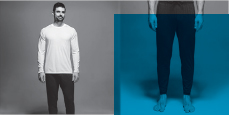
LULULEMON
YOGA STORE FOR MEN
In November 2014 Canada-based yoga wear brand lululemon—long associated with stylish women's yoga clothing—opened a New York store aimed at men. The 1,600-square-foot space caters to male yogis and features a section called The Joinery where shorts are custom made. Lululemon's menswear sales were around $216 million in 2013. The brand is targeting $1 billion “across the next few years,” says CEO Laurent Potdevin.

LG
SMARTPHONE FOR SENIORS
In September 2014, LG launched the LG Wine Smart cellphone in Korea: a flip phone that doubles as an Android smartphone. Designed for the elderly, the handset features a large keypad button and dedicated instant messaging button, alongside a “safe keeper” function that alerts friends or family if the user falls.

THUG KITCHEN
“GANGSTER” VEGAN DIET ADVICE
Traditionally, vegan cookbooks take aim at an affluent, aspirational demographic via an earnest and even (pseudo)-spiritual tone of voice. By contrast, the Thug Kitchen cookbook—an offshoot of the blog of the same name—aims to win over an altogether different set of customers via a promise to “abuse you into a healthier diet.” Liberal use of profanity and humor is combined with advice on healthy eating on a budget.
[4/4] HYPER-DEMOGRAPHIC TARGETING
Target niche tribes of taste and interest.
This chapter is all about the waning power of the traditional demographic model of customer segmentation. The irony here is that demographics are as relevant as ever today. But the nature of those useful demographic groups has radically changed. Rather than setting their sights on the traditional, broad segments, smart brands will target narrower demographic tribes of shared taste interest, and sensibility.
Psychographics—close study of customer lifestyles, interests, attitudes, and more—is nothing new. And of course, it's received wisdom now that the Internet has made it possible to identify and cater to “the long tail:” small tribes with a shared but niche interest.
But today, the oceans of data that customers are creating via their online searches, smartphone use, and more are making entirely new kinds of data-driven targeting possible. Now, customers needn't actively cluster into self-selected tribes—or even consciously know they are a member of a tribe—for your brand to reach out to them. Rather, each customer is constantly expressing their tastes, interests, values, and habits via the data they spin off as they go about daily life.
Today, brands that want to target customers effectively will use that data to shape new products and marketing around the real lifestyles and mind-sets of customers, rather than around the demographic assumptions of the past.
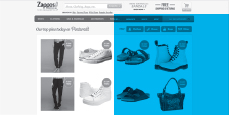
ZAPPOS
PINTEREST RECOMMENDATIONS
August 2012 saw U.S.-based e-tailer Zappos launch PinPointing, a service that makes product recommendations based on Pinterest boards and pins. Users can enter the name of any Pinterest user and see apparel, accessories, and footwear recommendations that are based on the type of images pinned. Shoppers can click through to purchase items on Zappos.
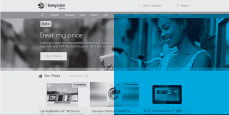
BARCLAYCARD
SPENDING HABITS TRIGGER DEALS
In May 2013, Barclaycard launched Bespoke Offers, a tailored deals brand that offers U.K. customers relevant prepaid deals and discounts based on their preferences and previous spending habits. Deals can be accessed through personalized daily emails or via a dedicated smartphone app, and can be purchased using Barclaycard's bPay payment system.
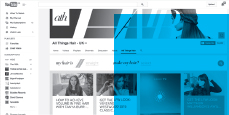
UNILEVER
DATA-DRIVEN HAIR TUTORIALS
December 2013 saw Unilever partner with Google to launch its All Things Hair YouTube channel, in partnership with a number of popular British YouTube vloggers. The brand commissions the vloggers to create short shows based on real-time search data, ensuring that the content is relevant. The channel was viewed over 13 million times in its first year, and Unilever expanded the initiative to Canada.
POST-DEMOGRAPHIC PRIORITIES
There is no formal methodology when it comes to how to use your awareness of Post-Demographic Consumerism as you identify and prioritize the trends that are important to you. The move toward a Post-Demographic world is itself too complex and too fluid to be captured by any such scheme.
Instead, you should let an awareness of the shifts outlined in this chapter percolate through the thinking and discussions you have as you set about identifying the trends you want to run with, and prioritizing their application.
To help you in this process, here are some Post-Demographic questions to ask:
[1] New Normal: how can we celebrate and cater to non-traditional lifestyles and identities?
[2] Heritage Heresy: what should our brand never do? What would it look like if we did just that?
[3] Cross-Demographic Fertilization: what entirely new demographic groups can we take inspiration from and cater to?
[4] Hyper-Demographic Targeting: what new tribes of shared taste and interest could we target?
> NEXT
Having read this chapter, you now:
- [1] Understand the profound shift in the consumer arena that is the rise of Post-Demographic Consumerism;
- [2] See how this shift poses a challenge to the thinking most organizations have traditionally used when they focus and set priorities; and
- [3] Know the four key opportunities that can help you navigate this new, more fluid customer arena.
Next, let's drill deeper into the process of choosing the trends you'll run with by learning a key secret: almost any trend can offer you powerful innovation opportunities.
You've read SCAN and you're spotting trends. Maybe you're spotting more than you can handle! But how can you isolate that crucial handful of trends that will see you launch a killer new product or service, create a campaign that gets everyone talking, innovate your way to a new business model, or even overhaul your entire vision of your organization?
In this chapter, we'll examine a core truth when it comes to consumer trends, one you've already glimpsed via the three core elements of a trend and the previous chapter on Post-Demographic Consumerism. That is, almost any trend can offer you powerful innovation opportunities; unlocking those opportunities is all about adapting the trend for your context.
To see how, we'll look at the three key dimensions of adaptation that you can use to do just that: trend maturity, industry, and locality.
Evaluating a trend against those three dimensions will allow you to see deeper into the innovation opportunities that a given trend offers you. And what you learn from that evaluation will prove invaluable when you come to prioritize the trends you're going to work with, which you'll be doing in 3.3 using the Consumer Trend Radar.
So let's get started, and learn more about why identifying the opportunities offered by trends is all about adaptation.
TREND ADAPTATION
Trends are (nearly) universal. So it's all about adaptation.
In September 2013, Lego unveiled Professor C Bodin: its first female scientist character. March 2014 saw Brazilian bank Itaú Unibanco launch Mulher Empreendedora (Woman Entrepreneur), an initiative aimed at female entrepreneurs that includes networking events and seminars. Meanwhile, in July 2014, U.S. retailer Walmart launched its Women Owned initiative, which sees it sell a range of products produced by women entrepreneurs.
Walmart, Itaú Unibanco, and Lego: three brands with little in common. But all three have rolled out successful applications of the FEMPOWERMENT trend that we first saw in SCAN (in Chapter 2.3), which is seeing brands empowering women to think and acts beyond gender stereotypes.
The idea that your organization can apply almost any trend successfully might seem strange. But it's a direct consequence of the nature of both trends—more specifically, their universality—and the global consumer arena.
TRENDS ARE UNIVERSAL
In SCAN, we looked at the three fundamental elements of any trend: basic needs, drivers of change, and innovations.
Re-looking at basic needs and drivers of change can help you understand how consumer trends are essentially universal in their nature.
[1] Basic needs: these fundamental human needs and wants—connection, security, excitement, and so on—are universal to all people.
[2] Drivers of change: from the global embrace of smartphone culture to social liberalization across many societies worldwide, in an increasingly globalized world the external changes driving a trend are almost always playing out somehow in any region.
So, trends themselves are increasingly universal and global, with the basic needs and drivers of change that inform them almost always playing themselves out somehow in any given context. As a result you can take almost any trend, and it's less a matter of whether it is relevant to a given industry or locality, and more a question of how it is relevant.
THREE AXES OF ADAPTATION
At heart, intelligent adaptation of a trend means asking a key question: how are the new customer expectations that inform this trend playing out in my context?
In this chapter, we'll take a closer look at how to answer that question by evaluating a trend against three key axes of adaptation: trend maturity, locality, and industry. Evaluating a trend against the three axes is the key to drilling deeper into the opportunities that the trend offers you.
And if you're already wondering, “If every trend offers me powerful opportunities, how will I ever choose which to apply?” then don't worry. As we'll see in the next chapter, that depends above all on you—your aims, capabilities, and resources. But first, let's get started on a closer look at the three axes of trend adaptation.
[1] TREND MATURITY
Am I too late? Am I too early?
August 2012 saw Tinder launch a dating app into a crowded market, riding a trend for digital-fueled social connection that's been running for well over a decade. Meanwhile Oculus Rift raised $2.4 million on Kickstarter, tapping into a trend for virtual reality that is still in its infancy, and has yet to touch the lives of most customers.
“Am I too early to this trend?” “Am I too late?” Those are two of the most common questions we hear from clients practicing trend-led innovation. Here's what we tell them in a nutshell: stop worrying about too early and too late, and focus on great adaptation for today.
Across the next few pages, we'll look at why that holds true.
First, we'll examine how customer adoption of new innovations in the Expectation Economy has become fluid and unpredictable.
Next, via case studies of Tinder and Seventh Generation, we'll see how it's great adaptation of a trend for the needs and wants of today's customers that counts.
Last, we'll look at how to adapt any trend for today by evaluating the trend's three fundamental elements. And we'll see how innovators have done just that with the pop-up trend across the last 13 years.
The purpose of all this? Learn how to evaluate a trend against today's context, and you'll be able to drill deeper into the opportunities that trend offers you—and to decide whether you want to pursue them.
The challenge to being ahead of the trend . . . is finding out how does the problem you're solving touch customers' lives. If you are a good systems thinker you can almost always find a point at which that problem connects with something that they care about.
Jeffrey Hollender
FORGET TOO EARL AND TOO LATE
While too late and too early are among the most common concerns we hear from people when it comes to trends, they are concerns of decreasing relevance in today's Expectation Economy.
The pace of change is too relentless and customer adoption of the new too fluid for “too early” and “too late” to be meaningful in the way they once were.
Instead, unpredictable patterns of adoption are the norm—and great adaptation of trends for today is the answer.
TRADITIONAL ADOPTION
In his famous 1962 book The Diffusion of Innovations, Everett Rogers established the traditional theoretical model of how innovations—new ideas, technologies, products, and more—are adopted by both individuals and groups. Rogers said that the adoption of an innovation predictably follows a bell curve, starting with innovators, then early adopters (Rogers coined the phrase), going through the majority, and ending with laggards.
ADOPTION DISRUPTED
Today, thanks to forces driving the emergence of a Post-Demographic customer arena—instant access to information, the decline of traditional social norms, the diversification of status seeking and more—adoption patterns have become much less stable.
Sometimes, adoption by the global mainstream can happen almost instantly (see the excellent Big Bang Disruption by Larry Downes and Paul Nunes for more on this). In 2015, for example, WhatsApp boasted 700 million monthly active users: a user base assembled in just six years.
At other times, adoption can suddenly hit a tipping point, as the case study on Tinder on the next page shows. But of course, a world of instant adoption can also be one of instant disengagement, too. Remember Draw Something? Back in 2012 the app gained 35 million downloads in six weeks, only for the user base to plummet by millions within weeks of being acquired by mobile games giant Zynga, as people moved on to the next hot mobile game.
The underlying lesson? In the Expectation Economy, the bell curve model of customer adoption is no longer a reliable guide. And that means innovators should—within reasonable limits, of course—drop notions of “too early” and “too late” and focus on great adaptation for now.
Let's see how the innovators behind Tinder did just that.
IN THE EXPECTATION ECONOMY, ADOPTION OF NEW PRODUCTS AND SERVICES IS FLUID AND UNPREDICTABLE. SO FORGET TOO EARLY AND TOO LATE, AND ADAPT FOR TODAY!
TINDER
The ultra-successful dating app is a case study in the power of adaptating an established trend.
By mid-2014, Tinder was boasting 1 billion swipes a day (revisit Chapter 2.1 for more details on the popular dating app).
But when the app launched in August 2012, there were already several other successful mobile dating apps in the market, including OKCupid's, which had around 60 percent market share (see the graph opposite). The innovators behind Tinder might well have concluded: “We're too late to the trend for digital-fueled romantic connections.”
Instead, they adapted that trend for the time. That meant creating a service that was thoroughly mobile first, serving social connections that were ultra-location specific and near-instant. It meant integration with Facebook to dispense with a lengthy “tell us about you” signup. And it meant nailing expectations of protection from unwanted advances by ensuring users can't contact one another unless they signal mutual interest.
Still, for around a year, adoption was slow. But in the middle of 2013, the app hit a tipping point fueled by marketing on U.S. college campuses and great word of mouth. Within months Tinder had blown the incumbents away and has rarely dropped out of the most downloaded apps since then.
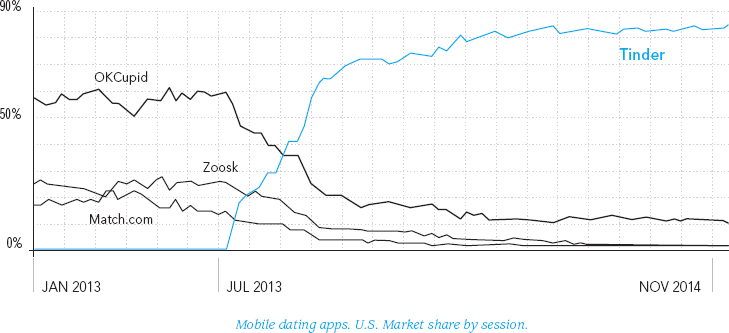
This example of the unpredictable, accelerated adoption possible in today's Expectation Economy is a case study in how notions of “too early” and “too late” just don't hold true. Instead, as the innovators behind Tinder intuitively understood, applying a trend now means adapting it around the human nature, external change, and new expectations as they are currently manifesting themselves.
SEVENTH GENERATION
The company jumped early on the trend for a more conscious consumerism—and adapted it well.
Entrepreneur Jeffrey Hollender co-founded sustainable personal care and household product company Seventh Generation in 1989, well before many people were aware of the impact of their consumption. He explains how one can overcome being early to a trend:
“What interests me is the role businesses can play in creating trends—and I'm particularly interested in trends that influence society in a positive way. Most people think of trends as things that need to be followed rather than created; but imagine how different the world would be if all businesses were creating healthy, responsible consumer trends, rather than focusing on providing superficial benefits to customers at a very high cost to society and the environment.
“So I'm never interested in waiting. The challenge to being ahead of the trend—which I have been for most of my life—is to find a way to start a dialogue with the consumer. Perhaps you want to provide a solution to a problem they don't yet know exists. So you need to ask: how does this problem touch their lives and what they care about? Solving that problem can be difficult, time-consuming, and expensive—but I would never want to be limited by what people think is currently ‘on trend.’
“Take our organic cotton tampons as an example. Around 15 years ago, we bought a company named Organic Essentials with a focus on growing cotton organically because of the damage that pesticides were doing to the environment and farm workers.
“Because consumers were not aware of the fact that the cotton in tampons contained pesticide residue as well as dioxin left over from the bleaching process, these issues didn't really connect with consumers. But if you change the angle and ask how much pesticide residue is in the tampon that a customer is using, and what harm could that be doing—thus taking the same issue, but emphasizing a different part of the system—that problem clearly becomes more much compelling.
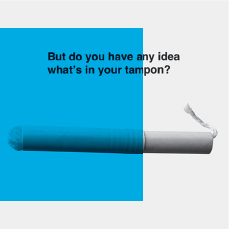
“The organic cotton tampons launched in 2008 and we quickly got good distribution. Today, feminine care is a $5- to $10-million-a-year business for the company.”
Organic cotton tampons are just one of the many forward-thinking sustainable products that have helped propel Seventh Generation to over $300 million a year in annual sales by 2014 (although Hollender left Seventh Generation in 2010).
ADAPT ANY TREND FOR MATURITY
Where does this leave you? We've seen how customer adoption in the Expectation Economy can be unpredictable. And we've looked at the answer to that for trend-led innovators: don't worry about too early and too late; instead, adapt your trend for today.
The good news? Adapting a trend for today doesn't have to be a mysterious, intuition-led process. Instead, it's about evaluating the three core elements of the trend and how they are coming together to create new expectations.
[1] Basic needs: how are the basic needs that underlie this trend being expressed now? If the trend is an established one, how has this changed over time?
[2] Drivers of change: how has the external change driving this trend evolved? What have those changes meant for your customers?
[3] Innovations: what underlying insights can you draw from the examples of the trends you're seeing now, both into how the trend is playing out in customers' lives and how that will develop?
Analyze the three fundamental elements of any trend, and you'll be primed to answer the key question: how are the customer expectations that inform this trend playing out now?
Adapting a trend for today doesn't have to be a mysterious process. It's about evaluating the three core elements of the trend and how they are coming together to create new expectations.
ADAPTATION IN ACTION: POP-UPS
We first flagged pop-ups way back in 2004, when we highlighted the trend for temporary retail spaces that offer customers a sense of surprise and urgency, and the chance to live an experience that most other shoppers won't have.
Of course, since 2004 the trend has spread worldwide, been deployed by countless brands, and become a standard part of the retail playbook. And as you'll see in the trend timeline overleaf, across the years the trend has evolved from standard retail plays, to tech-fueled and experiential pop-ups, toward today's pop-ups that offer more lasting and meaningful social value.
Let's analyze the pop-up trend via the three fundamental elements:
[1] Basic needs: the desire for excitement, surprise, and memorable experiences that underlie this trend is ageless.
[2] Drivers of change: from more ubiquitous online retail, to growth in the status value of rare experiences, to globalization and the simultaneous rising importance of the local, since 2003 the external changes driving this trend have undergone huge evolution.
[3] Innovations: constant innovation when it comes to pop-ups has both served and set new expectations for the trend (see timeline overleaf).
The result? Across the years these external changes have acted to create new expectations of digital-style convenience and participation, of exciting and status-worthy experiences, of brands that deliver real and lasting social value to localities, and more.
POP-UPS
One trend adapted for today—over, and over, and over.
[DEFINITION]
Temporary retail spaces that offer one-off experiences of shopping in new places and in new ways.
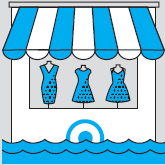
2002
PURE RETAIL POP-UP
TARGET
POP-UP ON THE HUDSON RIVER
Tapping into a rising trend for ephemeral retail spaces, and to test the Manhattan market, clothes retailer Target opened a temporary, floating store on the Hudson River. Housed in a barge, the pop-up showcased Christmas holiday merchandise.
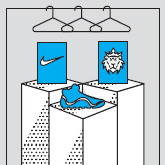
2006
LOCAL EVENT LINKED POP-UP
NIKE
POP-UP WHEN LEBRON PLAYS IN NYC
Taking aim at customer demand for local relevance, Nike tied a SoHo pop-up to a local event. The brand marked a clash between the Cleveland Cavaliers and the New York Knicks by opening a six-day pop-up selling limited-edition Zoom LeBron IV NYC trainers. A queue of over 100 gathered outside the store before opening.
2011
SOCIALLY CONSCIOUS POP-UP
H&M
GLOBAL WATER CHARITY POP-UP
Swedish clothing retailer H&M launched a pop-up store in The Hague's popular Scheveningen resort intended to tap into rising customer expectations of a more ethical consumption. A variety of essentials were available at the shipping container-style shop on the beach, and 25 percent of proceeds went to global charity WaterAid.
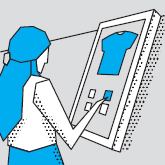
2013
TECH-FUELED, MAKER POP-UP
YRSTORE
DESIGN AND PRINT OWN T-SHIRTS
YrStore was a pop-up store in London where customers could satisfy their burgeoning expectations of tech-fueled participation and creativity. Via a touchscreen system, shoppers designed their own t-shirts with either stock images or their own artwork. Finalized designs could be printed immediately in-store.

2015
ART EXHIBITION OR POP-UP?
TARGET
ART INSTALLATION MEETS POP-UP
In March 2015—and 13 years after its pop-up on the Hudson River—Target opens the Target Too exhibition space in NYC. Visitors found 12 murals, displays, and sculptures based on Target products and could download an app to discover augmented reality features of the exhibition and purchase the products on which the installations were based.
[2] LOCALITY
What opportunities does this trend offer me in my target market?
Often, you'll identify consumer trends by spotting clusters of innovations from outside the market—continent, country, city, neighborhood—you are targeting.
But with proper adaptation you can extract powerful innovation opportunities for your target market(s).
Of course, there are exceptions to that general rule. In the rare cases in which the drivers of change that inform the trend are absent from the market in question, you've found a trend that can't (yet) be applied in this locality. For example, clearly the INTERNET OF CARING THINGS trend (see Chapter 2.3) cannot be applied in the ever-dwindling number of places with no Internet connectivity (but read about the Lumkani fire detector, coming up, to be reminded of how innovative technologies can serve the basic need for safety among populations without Internet).
For all other cases, evaluating the trend against your local context will allow you to drill deeper into the nature of the opportunities it offers. And that means taking a close look at how the basic needs, drivers of change, and innovations are coming together to create new expectations in that locality.
CASE STUDY: SAFETY NET
Some years ago, we started to spot an increasing number of digital tools and services intended to help keep users safe. That led us to identify the SAFETY NET trend, and since then we've seen it adapted by innovators around the world to suit local context (you can see five examples of this in the next few pages).
So, how would you evaluate the SAFETY NET trend against your local context?
Again, it's a case of looking closely at how the three fundamental elements of the trend are playing out:
[1] Basic needs: clearly the key aspect of human nature that underlies this trend is the desire to stay safe. What is specific about the way it's manifesting in your locality? One example: in China ineffective regulations and unreliable information make environmental and food safety a key concern. Meanwhile, in the United States and Western Europe data privacy has recently become a higher priority for many citizens in the wake of revelations about intelligence agency surveillance.
[2] Drivers of change: the key driving change here is digital technology. How is this playing out in your target market? What is smartphone penetration? Is use of the Internet clustered around certain target customers or more evenly spread?
[3] Innovations: how are examples of the SAFETY NET trend serving and creating new customer expectations? What underlying lessons can I draw for my locality?
Answer those questions, and you'll be primed to answer the key question when it comes to local adaptation: “How are the customer expectations informing this trend—in this case the expectation that new digital technologies will be put in the service of personal safety and risk reduction—playing out in my locality?”
SAFETY NET
Five innovations. Five adaptations for local context.
[DEFINITION]
New digital technologies and services—apps, platforms, devices, and more—to avoid or react to danger and minimize personal risk.
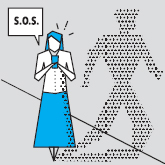
INDIA
PERSONAL SAFETY OF WOMEN
HIMMAT
POLICE SAFETY APP FOR WOMEN
The safety of women has been a key issue in India since the gang rape of a student in Delhi in December 2012 and the nationwide outcry that followed. In January 2015 Delhi Police launched the Himmat app. Targeted at women, the app allows a user to shake her phone to send an emergency alert to police and an SMS to two selected contacts.
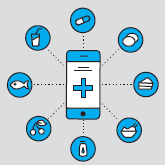
CHINA
FOOD SAFETY
CHINA SURVIVAL GUIDE
APP PROVIDES FOOD SAFETY INFO
Food safety scandals—including the infamous 2011 discovery of a stockpile of milk powder tainted with melamine—are a fact of life in China. Available from May 2012, the China Survival Guide is a free app that offers information on food safety. The app is regularly updated, with data organized into 12 categories, including beverages and dairy.
U.S. AND EUROPE
DATA PROTECTION
MERCEDES-BENZ
CLOUD PROTECTS DRIVER DATA
June 2013 revelations on U.S. government surveillance made data privacy a key concern for many citizens across the United States and Europe. September 2014 saw Mercedes-Benz announce a cloud-computing system designed to protect driver data. Users can control how much of their driving data is viewable by others and erase all data once they have completed a journey.
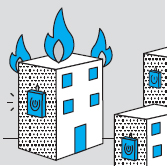
SOUTH AFRICA
SLUM FIRES
LUMKANI
FIRE DETECTOR FOR SLUM DWELLERS
In January 2013, a series of fires hit two Cape Town townships, leaving 4,000 homeless. Launched in 2013, Lumkani is a low-cost smart fire detector for slum dwellers. Innovative heat-sensing technology can distinguish between cooking and a dangerous fire. If a fire is detected by one device, all the others in a 100-meter radius will also sound an alarm.
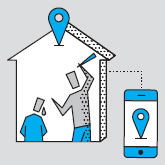
BRAZIL
CHILD ABUSE
PROTEJA BRASIL
ANONYMOUS REPORTING APP
UNICEF estimates that around 3 million children in Brazil are victims of child labor. Available from November 2013, mobile app Proteja Brasil allows Brazilians to send anonymous reports of child labor or other forms of child abuse. The free app was developed by UNICEF in partnership with Secretaria de Direitos Humanos and Ilhasoft Mobile.
[3] INDUSTRY
What opportunities does this trend offer me in my industry?
What happens if you spot a cluster of innovations in a particular industry—not your own—that point toward a newly emerging trend? Just as nearly any trend can be adapted for maturity and locality, so can nearly any trend be adapted for your industry, too.
Of course, there will be exceptions that hang on the nature of your industry. To take an extreme example, it's unlikely that a trend built around the need for thrills and a sense of danger could be successfully adapted by an airline.
But in almost all cases adaptation for your industry will be possible. And drilling down into the opportunities offered by the trend means evaluating it against your industry context.
BRAND MOVEMENTS
Across the last few years, rising numbers of brands from diverse industries have innovated around a trend we call BRAND MOVEMENTS, by launching campaigns and taking action to create positive change in the world: social, environmental, and more. So how would you set about adapting this trend for your industry?
Let's go back to the three core elements of any trend:
[1] Basic needs: the key aspect of human nature underlying this trend is to be a good person—and feel good about oneself—by living (and consuming) according to a vision of what is right. That's a universal human impulse that will be relevant whatever industry you're in.
[2] Drivers of change: many changes are helping drive this trend, but principal among them is rising awareness of environmental, social, and other problems and the role brands can play in them. So how is this awareness playing out differently across industries? For example, in the beauty industry rising numbers of customers are troubled by the negative impacts on girls and women of unrealistic standards of beauty. Meanwhile, in the energy industry, rising numbers of customers are concerned about damage to the environment.
[3] Innovations: how are examples of this trend across industries both serving and setting customer expectation? What underlying lessons can I draw from examples outside my industry?
Answer these questions, and you'll be able to see how the core elements of this trend are coming together to create new customer expectations in your industry. Yes, the central new expectation informing this trend is that brands will take action to drive positive change. But how will this expectation be brought to bear on your industry, and how can you best serve it? A physical space? A digital service? A campaign?
Overleaf, we look at how five brands, each from a different industry, answered those questions to generate their own BRAND MOVEMENT.
BRAND MOVEMENTS
One trend. Five industries.
[DEFINITION]
Brands are running campaigns—and taking action—to generate positive change in the world around them.
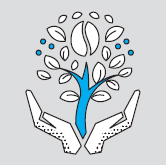
FOOD
GANG CULTURE
KENCO
SUPPORT AND TRAINING FOR HONDURAN YOUNGSTERS
U.K. coffee brand Kenco is owned by Mondelez International, the single largest purchaser of coffee beans from Honduras. In August 2014, Kenco revealed details of its year-long Coffee vs Gangs initiative. The U.K.-based coffee brand gave 20 young people in violent areas of Honduras training and support to build careers as coffee farmers.
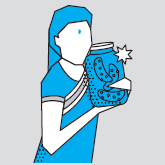
PERSONAL CARE
SOCIAL TABOOS
WHISPER
CAMPAIGN CHALLENGES SOCIAL TABOO IN INDIA
An Indian superstition holds that menstruating women should not touch a pickle jar because they will contaminate the pickles. June 2014 saw feminine hygiene brand Whisper launch the #TouchThePickle campaign, encouraging women to earn vouchers by speaking out against outdated social norms.
FINANCIAL
CIVIC REGENERATION
JPMORGAN CHASE &CO
$100 MILLION AND STAFF EXPERTISE FOR CITY OF DETROIT
In 2013, the city of Detroit filed for bankruptcy, with $18 billion in debts. June 2014 saw bank JPMorgan Chase commit $100 million to help regenerate the city. The bank also established the Detroit Service Corps, which sees top-performing employees deliver advice to local nonprofits.
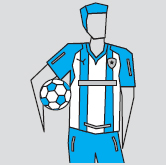
SPORTS
RACISM
BOTAFOGO
BRAZILIAN SOCCER TEAM TAKES STANCE AGAINST RACISM
April 2014 saw Brazilian soccer team Botafogo and sponsor Puma unveil a kit with inverted black and white stripes. Part of a campaign against racism in soccer, the shirt was meant to show that black and white are interchangeable. Via a dedicated microsite fans could create images of themselves wearing the new shirt.

BEVERAGES
LGBT RIGHTS
BREWDOG
ANTI-PUTIN BEER TO SUPPORT LGBT RIGHTS
In 2013, Russia passed a law against gay “propaganda” that was widely seen as an attack on LGBT rights. Ahead of the 2014 Winter Olympics in Sochi, irreverent Scottish craft beer brand BrewDog unveiled a beer called “Hello My Name Is Vladimir.” BrewDog donated 50 percent of profits to charities that help oppressed minorities.
ALWAYS BE EVALUATING
Keep the three axes in mind whenever you spot a trend.
In this chapter, we've looked more closely at how any trend can offer you powerful innovation opportunities. And, crucially, we've also seen how to drill down deeper into the nature of those opportunities by evaluating a trend against three axes of adaptation:
[1] Trend maturity: how are the customer expectations that inform this trend playing out now?
[2] Locality: how are the customer expectations that inform this trend playing out in my target locality?
[3] Industry: how are the customer expectations that inform this trend playing out in my industry?
Make it a habit to keep these three questions in mind whenever you spot a trend. And remember, the answers will change over time, so it pays to constantly evaluate and reevaluate the trends you're tracking.
Doing so will help you see how a trend is evolving over time and inside your target market and industry.
And as we've seen, it will ensure you have a clear picture of the innovation opportunities that a trend offers. And that will guide your thinking when you come to select and prioritize the trends that are most important to you—a process that is the subject of the next chapter.
> NEXT
Having read this chapter, you now:
- [1] Understand why almost any trend can offer your organization powerful innovation opportunities; and
- [2] Have seen how to evaluate a trend against the three axes of adaptation: trend maturity, locality, and industry.
Armed with that and an understanding of Post-Demographic Consumerism, it's time to start prioritizing the trends that you will work with. That's the subject of the next chapter—and the Consumer Trend Radar.
In the last chapter, you saw how almost any trend can offer you powerful opportunities. And how evaluating a trend against three dimensions of external context—trend maturity, industry, and locality—can help you frame the nature of those opportunities.
But the FOCUS process is far from over. Sure, your trend evaluations will already be pointing you toward the handful of trends—a typical range is between 3 and 10—that look most interesting to you. But how can you take those trends and create a concrete, actionable plan on which ones you will commit to running with, when, and how?
The answers to those questions depend on you. More specifically, on your organization's goals and priorities, its capabilities and resources, and the vision your team has of your shared future.
To create your plan, you must ask:
- Which trends should we apply now, and which later?
- What area(s) of our business or our offering should these trends impact on?
- How many resources should we commit to our application of this trend?
The Consumer Trend Radar (CTR) is a powerful tool that facilitates this assessment. The result is a single sheet of paper containing a shareable visualization of your trend-led strategy.
In this chapter, we'll walk you through using the CTR step-by-step, including a look at some worked examples.
INTRODUCING THE CTR
A summary of this tool and planning a session around it.
![]() Head online to download a poster size CTR template.
Head online to download a poster size CTR template.
WHEN TO USE
For businesses and nonprofits: the CTR can form the basis of a powerful annual or quarterly trendled strategy planning session. That session could address your entire organization or be specific to a department or team within your organization.
For agencies and consultancies: use the CTR to identify and plan the application of trends that are important to a new client. Take your completed radar with you to your next client presentation!
PLANNING A RADAR SESSION
The radar can be used by an individual or a team. But wherever possible choose the latter, because collective discussion around the CTR is likely to expose a range of different underlying assumptions about the functions, capabilities, outputs, and values of your organization.
During the session you'll be called upon to assess each trend against three dimensions—Innovation Target, Priority, and Response—positioning each trend on the CTR accordingly (a detailed How To Use guide is available later in this chapter).
The end result will be a one-page, visual map of your trend-led strategy, which tells you which trends you're going to apply, when, and how.
To run this session, you need nothing more than a large, blank CTR, Post-it notes, and pens. But a large pot of coffee certainly won't hurt, either.
YOUR CTR SESSIONS
Be guided by your goals, capabilities, and resources.
There's no right answer when it comes to developing your trend-led strategy. That's because your decisions on which trends to apply, when, and how should be based on the specifics of your organization: where it's at now and where you want it to be tomorrow.
TRENDS MEET YOUR BUSINESS
One way to think about the process that is filling in the CTR is that it's where trends meet your long-term goals and short-term aims, your capabilities and resources, and your vision of your own organization. In other words, it's where trends finally meet—and are seen through the lens of—your business.
Filling in the radar can—and should—prompt long (and even heated!) discussion about your organization, what it does, and where it should head next.
Sometimes you'll be able to use your goals and capabilities as fixed points of reference that help you assess a trend: “We have a short-term aim to be more flexible and responsive on pricing, so we should apply this pricing trend now.”
But at other times you'll find that thinking around trends is reshaping the very goals, aims, and resource allocation you brought to the table: “I really feel as though this peer-to-peer trend is important, and that's making me think we've neglected the sharing economy in our planning!”
Reevaluation of your organizational planning, then, will form a natural part of your CTR conversations. Embrace that, but remain focused on working toward a single, shared vision of your trend-led strategy.
During your CTR discussions, it will pay particular dividends to note when a trend that you feel is important is either:
[i] not reflected in any of your established goals or aims, or
[ii] is a trend that your current capabilities make it very hard or impossible to apply.
When you find such a misalignment, ask: “Why is this important trend not reflected in our goals? Is this a sign we need to change our goals?” or “Why does this important trend not align with our capabilities? What can we do to create the capabilities we need to apply this trend?”
POST-DEMOGRAPHIC COMPLEXITY
And of course, all of these reflections should take place against the backdrop of the Post-Demographic consumer arena described in the previous chapter.
With people freer than ever to construct lifestyles and identities of their choosing, the assumptions and rationales your organization previously used to set priorities need to be replaced by new thinking that accommodates this new Post-Demographic complexity: who your customers are, who they could be, what your brand “ought” to do, and more.
GET STARTED
Before plotting a trend on the CTR, you need to ask some key questions.
To guide your thinking on where to plot a trend on the CTR, you need to start by considering how the trend relates to your goals, capabilities, resources, and more. In other words, you need to ask: “What can this trend do for us?”
Use the questions below to kickstart discussion. Next, you'll use the answers you generated to help you plot the trend on the CTR.
- What are the long-term strategic goals for our organization, department, or team? How can this trend help us achieve or revise those goals?
- What are the short-term tactical aims for our organization, department, or team? How can this trend help us achieve or revise those aims?
- What are our organization's special capabilities? How do they impact upon our ability to apply this trend, both in terms of timing and level of commitment?
- If we lack the competencies and capabilities to apply this trend, what can we do to change this?
- What resources (including time and people) can we dedicate to the application of this trend? How should this guide how we apply the trend?
- If we lack the resources to apply this trend, what can we do to change this?
- What do our customers—and potential customers—expect from us? How could this trend help us serve those expectations or positively change them?
Strategy 101 is about choices. You can't be all things to people.
Michael Porter
PLOTTING TRENDS
Plot each trend on the CTR by addressing the three dimensions.
Once you've discussed how a trend fits into your organization's goals, capabilities, resources, and more—using the questions on the previous page to help—you're ready to plot it on the CTR.
Using the conclusions you generated during your discussion, you must now address the CTR's three dimensions:
[1] Innovation Target: in which area of my business will we apply this trend?
[2] Priority: when will we apply it?
[3] Response: with what level of commitment will we apply it?
The three dimensions are discussed in detail in the next three pages.
IDEATION WITH THE CTR
The CTR is all about planning and prioritizing application of trends. But invariably when you consider a trend against the three dimensions, you'll move toward the beginnings of ideation. Expect thoughts such as: “This trend could help us find our way to new services that reduce waiting time, which is an urgent priority, so I think we should apply this trend soon.” Or “I can really see an app now followed by a campaign.”
Broad ideation of this kind is a natural part of setting your trend priorities. Just remember, planning and prioritization of trends are the key focus of your sessions with the CTR. There will be plenty of time to move toward specific, concrete innovation ideas when you use the Consumer Trend Canvas, which we'll look at in the next chapter.
[1/3] INNOVATION TARGET
In which area of your business will you apply the trend?
Using the four types of innovation (outlined in SCAN in Chapter 2.2), consider the area(s) of your business that will be the target of this trend. Will you use this trend to reconfigure your entire vision of your business? To generate a new business model? A new product, service, or campaign? Or will it inform new marketing or campaigns?
Of course, many trends can and should impact on more than one—or even all—of these levels. Take the sharing economy as a trend and BMW's application of that trend in DriveNow, a car-sharing scheme in partnership with car rental company Sixt that makes car-sharing available across a range of European and U.S. cities. DriveNow is a service, but one that also opens the door to a new business model, and one that has allowed BMW to market itself (largely through earned media) as a forward-thinking brand. All set against the emerging vision of BMW as a mobility company rather than an automotive manufacturer.
If you want to apply a trend across more than one Innovation Target, plot the trend on the CTR so that it sits on the border between the two (see how BETTER BUSINESS is plotted in the worked illustration for an example of this).
![]() Vision
Vision
![]() Business model
Business model
![]() Product/Service
Product/Service
![]() Marketing/Campaigns
Marketing/Campaigns
[2/3] PRIORITY
When will you apply the trend?
You can't apply every important trend right away. Which are for now, and which can be left for later?
Of course, there's no single right answer. Timing application of any trend depends on your organization, its goals, aims, and capabilities. For example, just look at how three carmakers have applied the trend for collaborative consumption at different times:
Daimler jumped on the trend for customers to increasingly prefer access over ownership in 2008, when it rolled out its car2go car-sharing scheme, allowing users to rent a Smart car by the hour. Next up was BMW, which waited until 2011 to implement its own play on the trend, with the DriveNow car sharing program (discussed previously). Finally, Audi came to the trend in 2014 via Audi Unite. The pilot program allows Swedish customers to share a car in a private network of up to five people, using an app to keep track of the car's location and availability, and paying either a fixed charge or a fee based on personal usage.
Guided by your goals, aims, and capabilities, choose from three levels of priority: Now, Next, or Beyond.
![]() NOW: start today!
NOW: start today!
![]() NEXT: action within 6 to 24 months. Start planning.
NEXT: action within 6 to 24 months. Start planning.
![]() BEYOND: not a priority. Yet.
BEYOND: not a priority. Yet.
[3/3] RESPONSE
How intensely will you apply the trend?
In this dimension, you consider your level of commitment to the application of the trend.
How much time do you want to dedicate? How many resources—including money and people—do you want to use? What level of risk are you willing to bear?
Consider those questions against three levels. A light commitment: be experimental; launch new innovations quickly with no excuses. An intense commitment: a considerable investment of time, money, and people. A total commitment: a fundamental shift in your processes or approach.
Take Google's response to the trend for wearable devices. Google Glass was an intense response: one that required time, money, and people, but not a rethink of any fundamentals at the company.
You will notice natural alignments between certain levels and Innovation Targets. For example, when you consider the Innovation Target, if you chose to apply the trend at the level of vision, it is likely that this will require a total commitment. Meanwhile, a product/service application is likely to mean a light or intense response.
![]() LIGHT: launch new innovations quickly. No excuses.
LIGHT: launch new innovations quickly. No excuses.
![]() INTENSE: requires serious innovation commitment (time, money, people).
INTENSE: requires serious innovation commitment (time, money, people).
![]() TOTAL: entails fundamental shifts in mind-set, approach, or vision.
TOTAL: entails fundamental shifts in mind-set, approach, or vision.
LUXURY AUTOMOTIVE BRAND
This worked example shows where a luxury automotive manufacturer could plot three megatrends on the CTR.

The pursuit of status is one of the key drivers of behavior in the consumer arena. But now, consumer status is diversifying toward a range of nonmaterial characteristics: think skills and knowledge, eco-credentials, ethics, taste and sensibility, and more.
MARKETING / NOW / INTENSE
For many, cars are still the ultimate status symbol. Investment in building and supporting the brand's status impact in new ways is a crucial priority for us.
BUSINESS MODEL / NEXT / LIGHT
The diversification of status means cars are losing their position as status signifiers. Adapting to this shift will shape the future of the brand (see FUZZYNOMICS).
BETTER BUSINESS
Rising awareness of the negative impacts of much consumption is driving customers to demand that brands become “better” for society and the environment.
PRODUCT AND MARKETING / NOW / INTENSE
Cars are potent sources of ecoguilt for many customers. We'll need product-line innovations that address this by making our cars less damaging to the planet and other people. But marketing to position us as a responsible luxury choice is also crucial. We need to get going on this now!
FUZZYNOMICS
Driven by the democratization of technologies, tools, and platforms, the boundaries between producers and consumers are rapidly blurring.
BUSINESS MODEL / NEXT / TOTAL
Collaborative consumption models such as car sharing are becoming increasingly attractive to urban customers who prize convenience. The decline in the status attached to car ownership (see STATUS SEEKERS) is likely to only accelerate this shift. We need business model innovation to adapt—but that will take much planning and a big commitment of time and people.
FAST FASHION BRAND
This worked example demonstrates where a fast fashion brand could place three trends on the CTR. Each trend is illustrated by an example innovation.
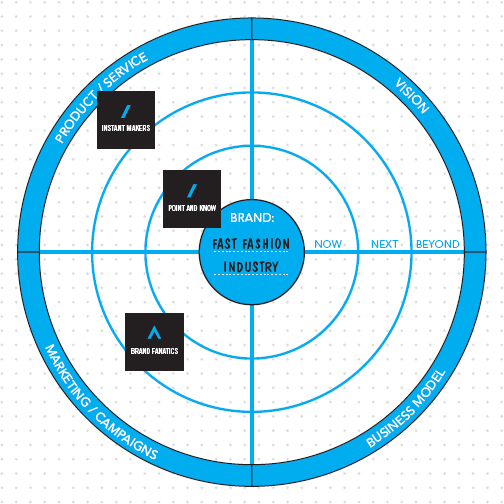
Smartphone-wielding customers will expect to be able to point their smartphone at any physical object and be instantly informed.
[Example] In April 2014, drinks brand Jose Cuervo launched a free mobile app called History in a Bottle. Users held their smartphone above a bottle of Cuervo Traditional to see an animated 3D history of the brand on their screen.
PRODUCT-SERVICE / NOW / LIGHT
Keeping customers more informed aligns with our long-term move toward transparency. How about experimenting with smartphone-scannable labels, linked to content about our manufacturing or sourcing processes?
INSTANT MAKERS
Fueled by a culture of online creativity, consumers will embrace opportunities to create their own products.
[Example] Launched in the United States in July 2014, Normal allows customers to custom-make their own earphones. Via the Normal app, customers take photographs of both ears using a coin as a point of reference for sizing and select accent colors. The earphones are then 3D-printed for a perfect fit.
PRODUCT-SERVICE / BEYOND / LIGHT Positioning our brand as one that empowers creativity is another long-term goal. Think in-store custom-printed purses, 3D-printed jewelry, and more. But this requires new capabilities and is lower priority.
BRAND FANATICS
Sophisticated, post-materialist customers are finding ever more outlandish ways to celebrate and champion their favorite brands.
[Example] In August 2014, IKEA ran a competition inviting its Malaysian fans to dress up as their favorite IKEA products. A total of 127 people took part in the contest to win store vouchers, with participants dressing up as items such as the Fnitter wall clock and Haggas pendant lamp, and submitting their pictures via Facebook.
MARKETING-CAMPAIGNS / NEXT / INTENSE
We already have a well-developed community of brand fans. What about a series of fan events across key cities, which form the basis of an online campaign? Let's engage our creative agency.
FMCG RETAILER
This worked example demonstrates where a Fast-Moving Consumer Goods retailer could place three trends on the CTR. Each trend is illustrated by an example innovation.
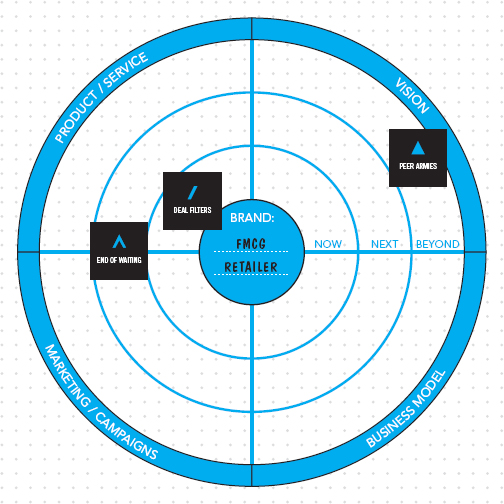
Fueled by the instant nature of the digital space, customer tolerance for waiting is falling to zero. Brands should identify customer wait times, and then kill it or fill it.
[Example] In October 2014, Starbucks piloted an “order ahead” function in its app across 150 stores in Portland. Users could order a coffee at a designated store and time, allowing them to skip the in-store queue.
PRODUCT/SERVICE AND MARKETING CAMPAIGN / NEXT / INTENSE
Making lives more convenient is a key way to differentiate our brand. Let's brainstorm around in-store and online/order ahead service. How can we champion these innovations via a campaign built around zero waiting?
PEER ARMIES
Businesses are leveraging networks of ordinary people (i.e. non-employees) to supercharge their customer service.
[Example] During the FIFA World Cup in June 2014, Brazilian beer brand Skol launched Consulado, a platform connecting locals with visiting tourists. Locals who helped visitors navigate their city were rewarded with discounts on bottles of Skol.
VISION / BEYOND / TOTAL
The trend aligns perfectly with our long-term goal to become a brand that offers customers a personal touch, including help with delivery from brand representatives. Could networks of peers allow us to do this in a new, more effective way? Needs serious thought.
DEAL FILTERS
Deal overload has become a new form of information overload. Consumers are searching for services that help them filter only the deals they want.
[Example] Launched in August 2014, fashion app Grabble allows users to browse fashion collections and swipe right on an item to receive an alert when it is discounted.
PRODUCT-SERVICE / NOW / LIGHT
Customers tell us our deals are hard to navigate. We have the technical capacity to quickly roll out a digital service to help customers filter deals based on their personal preferences.
TRENDWATCHING
This worked example shows how we at TrendWatching recently plotted three mega-trends that are important to our future on the CTR.
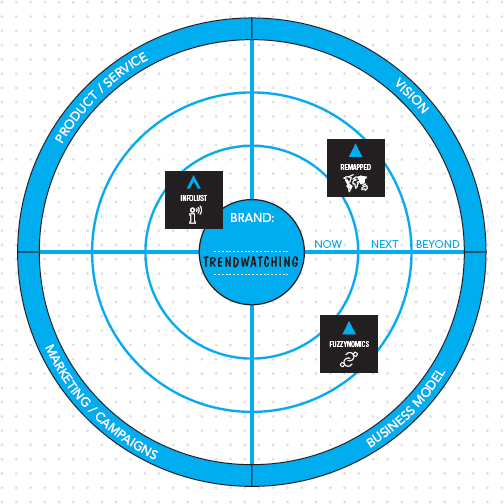
Driven by the democratization of technologies, tools, and platforms, the boundaries between producers and consumers are rapidly blurring.
BUSINESS MODEL / NEXT / TOTAL
We already crowdsource many innovations from TW:IN, our global network of trend spotters. How could we transform the network to exponentially increase the number and quality of submissions, allowing us to provide entirely new kinds of crowd-powered insight?
INFOLUST
Consumers will continue to embrace tools that offer them entertaining and useful information in new and compelling ways.
PRODUCT-SERVICE / NOW / INSTENSE
Of course, trend information is what we've always been about! But this mega-trend aligns with our aim to share powerful data on how our readers interact with trends. Think heat maps of important trends by industry and region, user-generated insight, and more.
REMAPPED
The rise of a multipolar global economy is not just expanding consumer markets, it's creating new processes, structures, business models, and brands.
VISION / NEXT / TOTAL
A fundamental part of our vision for the months and years ahead is that we increase our international presence and our ability to deliver global insight with local relevance—a demanding and ongoing commitment.
BUILDING YOUR TREND-LED STRATEGY
We don't claim that it's easy to complete the CTR. Talking through your important trends and agreeing where to plot them against the three dimensions means addressing—and finding agreement on—fundamental questions about your organization's capabilities, mission, and future. It takes time and effort. But dedicate that time and effort and you'll be more than paid back: by the process itself, and the end result that is your completed CTR.
First, the process will encourage—or rather, force—you and your team to confront hidden assumptions that have guided your decision making in the past. You'll then have to commit to a shared vision of how the business should move forward.
It should also be exciting. The structured process will help your organization uncover dimensions and new opportunities that you hadn't previously considered. And seeing the results visually will help get people on board.
And second, once you have been through the process and have a completed radar, you'll have an embodiment of the plan you have settled on. A simplification of a more complex reality, yes; but one that will set a clear path to direct and encourage concrete action in the months and years ahead.
Share it with colleagues, stick it on walls, put it on the company intranet. And then get going!
> NEXT
Having read this chapter, you now:
- [1] Understand the Consumer Trend Radar (CTR) and its three dimensions; and
- [2] Can run a successful CTR session and create a visual, shareable map of your trend-led strategy for the months and years ahead.
That draws the FOCUS section to a close. Equipped to choose the trends you'll run with and plan their application, you're now ready for GENERATE, where you'll learn how to turn trends into innovations that consumers will love.

